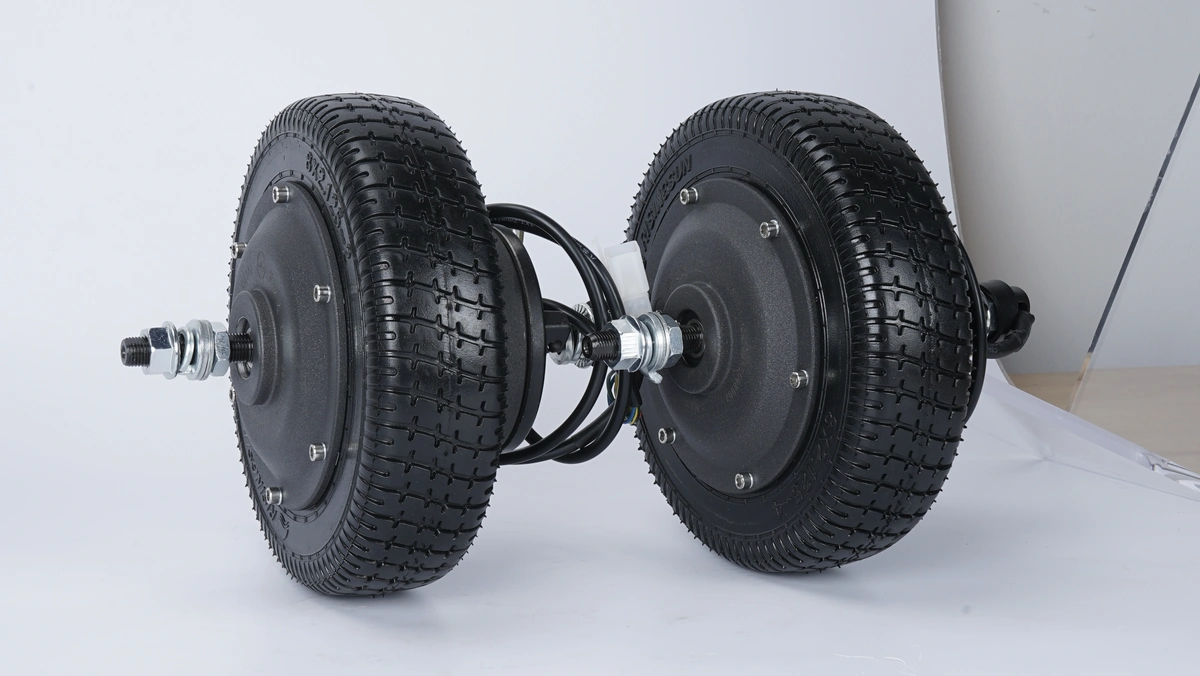The distribution of weight in a vehicle plays a crucial role in its overall performance, stability, and handling characteristics. When integrating a hub motor into a vehicle, understanding how it impacts weight distribution is essential for engineers and designers. In this article, we will explore the intricacies of how a hub motor affects the weight distribution of a vehicle, highlighting key considerations and implications for vehicle dynamics.
Weight distribution refers to how the total mass of a vehicle is distributed among its various components, including the chassis, body, engine, drivetrain, and other systems. In traditional internal combustion engine vehicles, weight distribution is carefully balanced to optimize handling, traction, and stability. The ideal weight distribution varies depending on the vehicle's intended use, such as sports cars favoring a rear-biased weight distribution for improved cornering performance.
Hub motors, also known as in-wheel motors, are electric motors integrated into the wheels of a vehicle. Unlike conventional drivetrains where the motor is placed separately, hub motors offer a compact and direct-drive solution. By housing the motor within the wheel hub, the vehicle's design can be simplified, and space within the vehicle can be utilized more efficiently.

The integration of hub motors into a vehicle can have a significant impact on its weight distribution. Placing the motor directly in the wheels alters the distribution of mass, potentially affecting the balance between the front and rear axles as well as the left and right sides of the vehicle. The additional weight of the hub motors in the wheels can lead to a redistribution of mass, which may influence the vehicle's handling characteristics, traction, and overall performance.
When incorporating hub motors into a vehicle, engineers must carefully consider how the added weight will affect the vehicle's balance. Balancing the weight distribution between the front and rear axles is crucial for maintaining stability and traction. Advanced simulations and testing can help determine the optimal placement of hub motors to achieve the desired weight distribution while minimizing any negative effects on vehicle dynamics.
While hub motors offer advantages such as improved efficiency, regenerative braking, and space-saving design, they also present challenges in terms of weight distribution. Engineers must find a balance between the benefits of hub motors and the potential impact on vehicle dynamics to ensure optimal performance and safety. Proper tuning of suspension systems, steering geometry, and electronic controls can help mitigate any negative effects on weight distribution caused by hub motors.
In conclusion, the integration of hub motors into a vehicle can significantly impact its weight distribution, potentially affecting handling, traction, and overall performance. Engineers and designers must carefully consider how the added weight of hub motors will influence the vehicle's balance and make adjustments to optimize weight distribution for optimal vehicle dynamics. By understanding the implications of hub motors on weight distribution and implementing effective design strategies, vehicles can harness the benefits of electric propulsion while maintaining excellent handling characteristics. Balancing innovation with engineering principles is key to successfully integrating hub motors into modern vehicle designs.
Leave A Comment